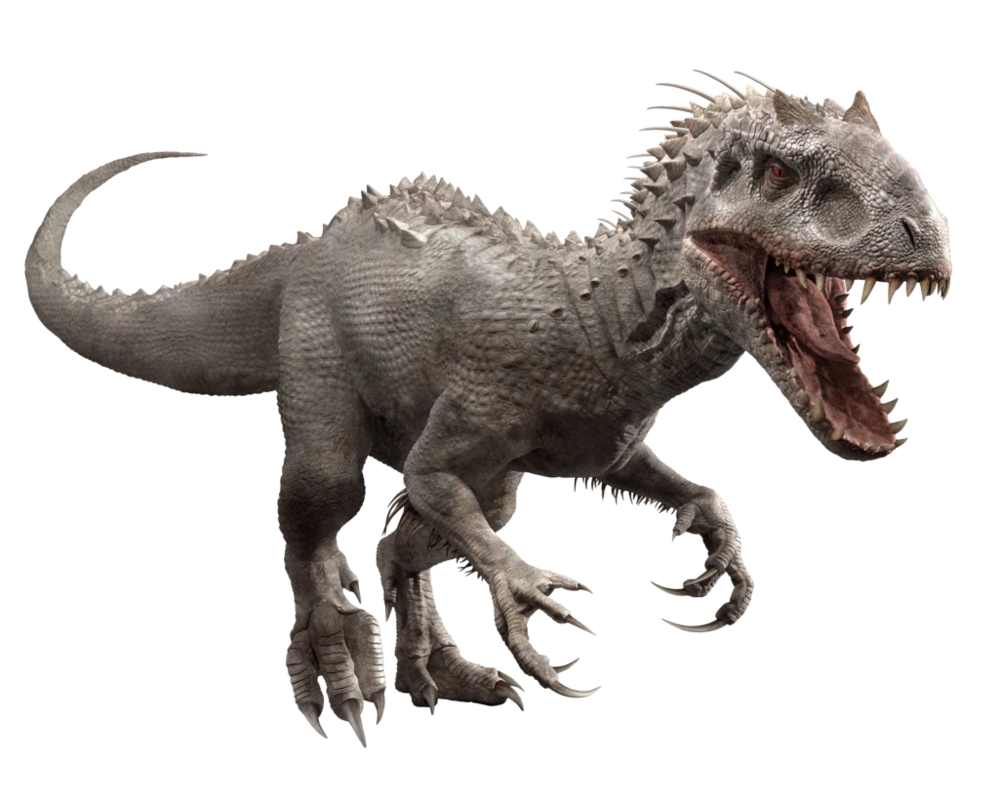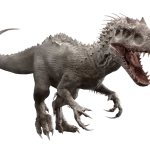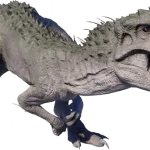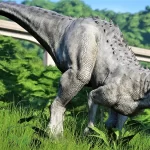“Oh, Indominus wasn’t bred. She was designed. She will be fifty feet long when fully grown. Bigger than the T. rex.”
— Dr. Henry Wu
Indominus rex is one of the largest existing theropods in the Jurassic World film, as well as the film’s main antagonist, the secondary antagonist of the first season of the Netflix series, Jurassic World: Camp Cretaceous, and a minor antagonist in the show’s fourth season. In the film Jurassic World, she was going to be the latest attraction added to the park for higher profits. The hybrid was created by modifying the genome of a Tyrannosaurus rex with the DNA of various other theropods. Some of the known species that were included were Velociraptor, Carnotaurus, Giganotosaurus, Majungasaurus, Rugops, Pycnonemosaurus, Quilmesaurus, Viavenator, Deinosuchus, and Therizinosaurus. There were also the DNA of modern animals such as cuttlefish, tree frog, and a pit viper snake.
The genome of Tyrannosaurus rex was used as the base genome for the hybrid. It also gave the Indominus rex an incredibly strong bite that could crush bulletproof glass. Velociraptor DNA was added for high levels of intelligence and the ability to make plans and decisions. Giganotosaurus DNA was added for the large size of the Indominus. It was mentioned that the Indominus rex would be larger than the T. rex when fully grown. Abelisaur genes (Carnotaurus, Majungasaurus, Rugops,[1] Pycnonemosaurus, Quilmesaurus, and Viavenator) were added to act as a biological form of armor that absorbed most of the incoming attacks. Deinosuchus DNA was used to form the crocodilian teeth of the Indominus that were used in grasping the flesh of opponents. Therizinosaurus DNA added the presence of long forelimbs with strong, slashing claws. One swipe of the hybrid’s claws would take down a specific opponent. Cuttlefish genes were intended to help the Indominus withstand an accelerated growth, but it also added chromatophore cells in the skin so it could change the shape, color, and texture of its skin like a cuttlefish. Tree frog DNA was added for the Indominus to adapt to the tropical climate of Isla Nublar, but it instead added the ability for the animal to remove her thermal signature, which confused most of the heat-based infrared cameras. Lastly, pit viper snake DNA added special cavities in the skull that allowed her to see infrared, which helped her see the heat coming from her prey in dark areas.
Jurassic World Camp Cretaceous Extreme Damage Indominus Rex 9.5 Dinosaur Figure DNA Scan Code

Name Meaning
Diet
Height
Lenght
Weight
Indomitable/Fierce/Untamable King
Carnivorous 🥩
6.7 meters (21.9 ft, fully grown)
16.9 meters (55.4 ft, fully grown)
Unknown






